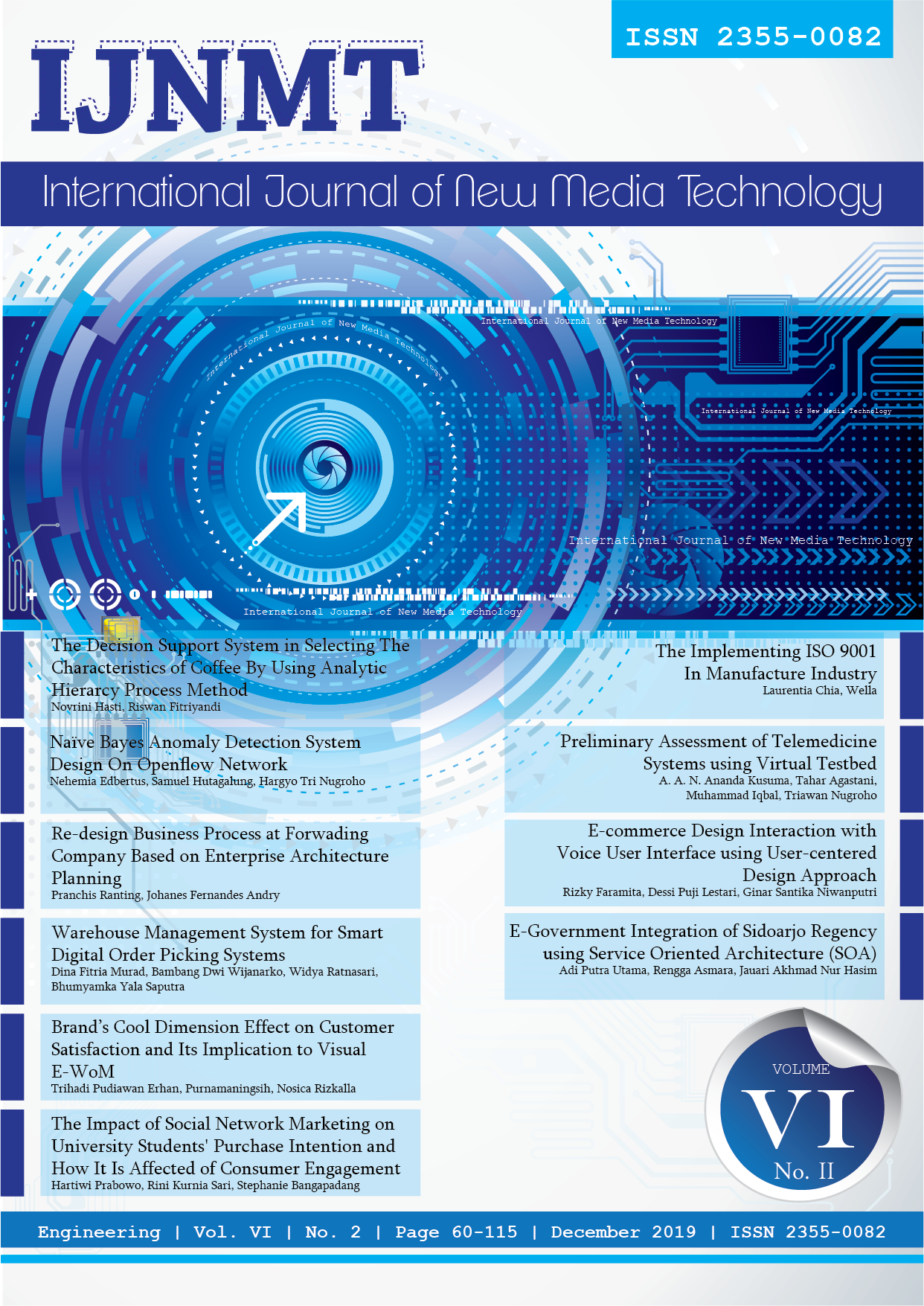Brand's Cool Dimension Effect on Customer Satisfaction and Its Implication to Visual E-WoM
DOI:
https://doi.org/10.31937/ijnmt.v6i2.1224Abstract
As Word of Mouth (WOM) progress as one of the most potent marketing instruments, millennials are a vital contributor to the growth of eWOM. Considering how powerful eWOM is and the significance of millennials as the generation that derives the transformation of eWOM as the primary source of information for the customer, it is important to know the variables that drive millennial customers desire to provide information about product and service through their own social media account. This study then employed structural equation modeling to analyze the data. This study finds that out of the two, cool factors only hedonic cool is proven to have a positive and significant influence on customer satisfaction. The other finding is that active Visual eWOM activity of customer are positively influenced by customer satisfaction.
Downloads
Downloads
Published
How to Cite
Issue
Section
License
Authors retain copyright and grant the journal right of first publication with the work simultaneously licensed under a Creative Commons Attribution-ShareAlike International License (CC-BY-SA 4.0) that allows others to share the work with an acknowledgement of the work's authorship and initial publication in this journal.
Authors are able to enter into separate, additional contractual arrangements for the non-exclusive distribution of the journal's published version of the work (e.g., post it to an institutional repository or publish it in a book), with an acknowledgement of its initial publication in this journal.
Copyright without Restrictions
The journal allows the author(s) to hold the copyright without restrictions and will retain publishing rights without restrictions.
The submitted papers are assumed to contain no proprietary material unprotected by patent or patent application; responsibility for technical content and for protection of proprietary material rests solely with the author(s) and their organizations and is not the responsibility of the IJNMT or its Editorial Staff. The main (first/corresponding) author is responsible for ensuring that the article has been seen and approved by all the other authors. It is the responsibility of the author to obtain all necessary copyright release permissions for the use of any copyrighted materials in the manuscript prior to the submission.















